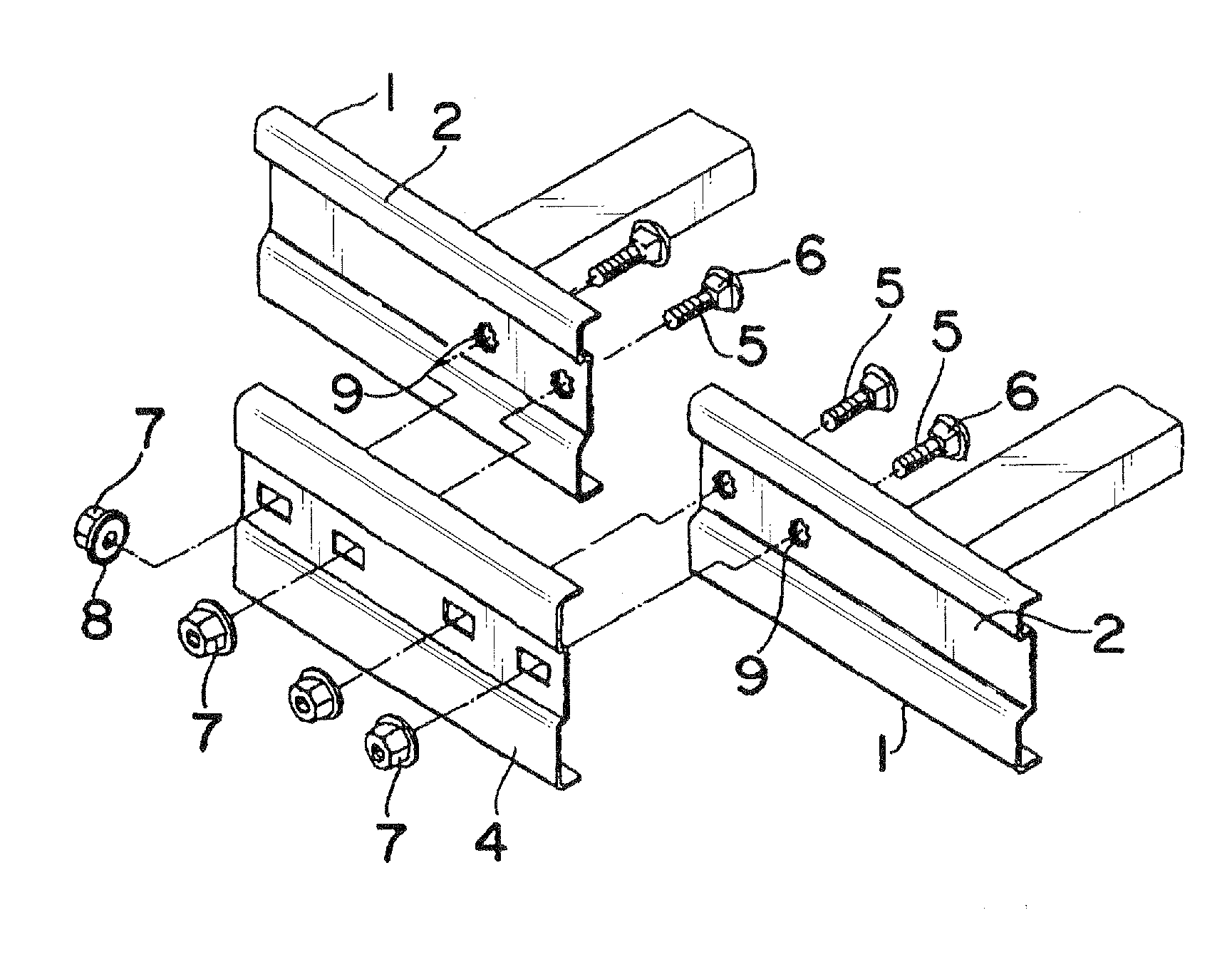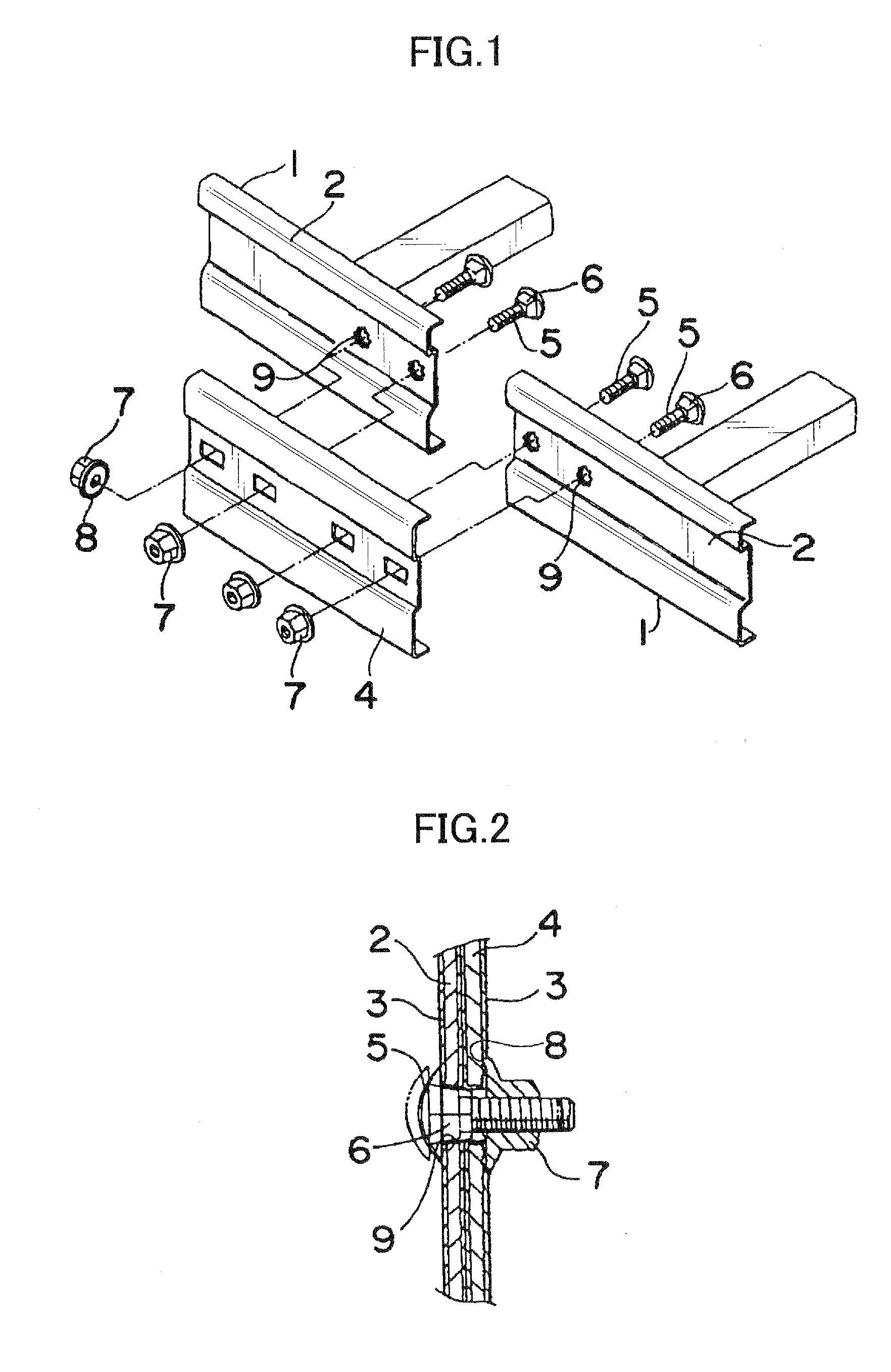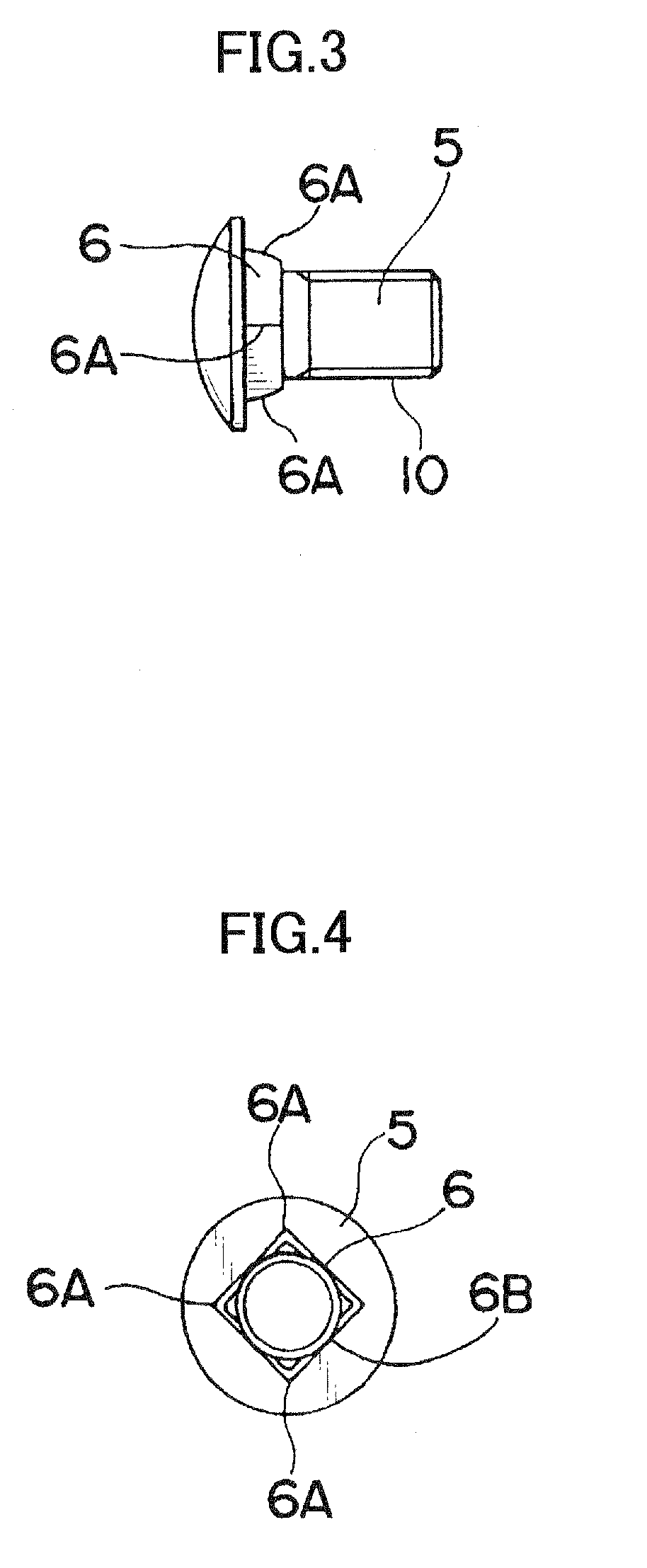Joint structure of cable racks
a joint structure and cable rack technology, applied in the direction of screwdrivers, threaded fasteners, machine supports, etc., can solve the problems of difficulty in further peeling of film, time and effort, and current cannot bypass therethrough, and achieves sufficient electrical conduction, large friction resistance, and minimal time and effort
- Summary
- Abstract
- Description
- Claims
- Application Information
AI Technical Summary
Benefits of technology
Problems solved by technology
Method used
Image
Examples
Embodiment Construction
[0034]A preferred embodiment of the present invention is directed to achieving the desired object thereof in the following manner. A bolt insertion hole is formed in a circular shape so that only a distal end of a polygonal neck portion of a joint bolt can be inserted thereinto. Further, the bolt insertion hole has a plurality of recesses formed in an inner peripheral surface thereof and adapted to lock respectively at least two of three or more corner edges of the neck portion, in such a manner that they bite into an inner peripheral surface of the bolt insertion hole at respective positions of the corner edges thereof whereby the corner edges of the neck portion are locked by the corresponding ones of the recesses. When the neck portion of the joint bolt has a four-sided shape in cross-section, the recesses are formed in the inner peripheral surface of the bolt insertion hole at positions lockingly engageable respectively with an adjacent two of the four corner edges of the four-s...
PUM
 Login to View More
Login to View More Abstract
Description
Claims
Application Information
 Login to View More
Login to View More - R&D
- Intellectual Property
- Life Sciences
- Materials
- Tech Scout
- Unparalleled Data Quality
- Higher Quality Content
- 60% Fewer Hallucinations
Browse by: Latest US Patents, China's latest patents, Technical Efficacy Thesaurus, Application Domain, Technology Topic, Popular Technical Reports.
© 2025 PatSnap. All rights reserved.Legal|Privacy policy|Modern Slavery Act Transparency Statement|Sitemap|About US| Contact US: help@patsnap.com



